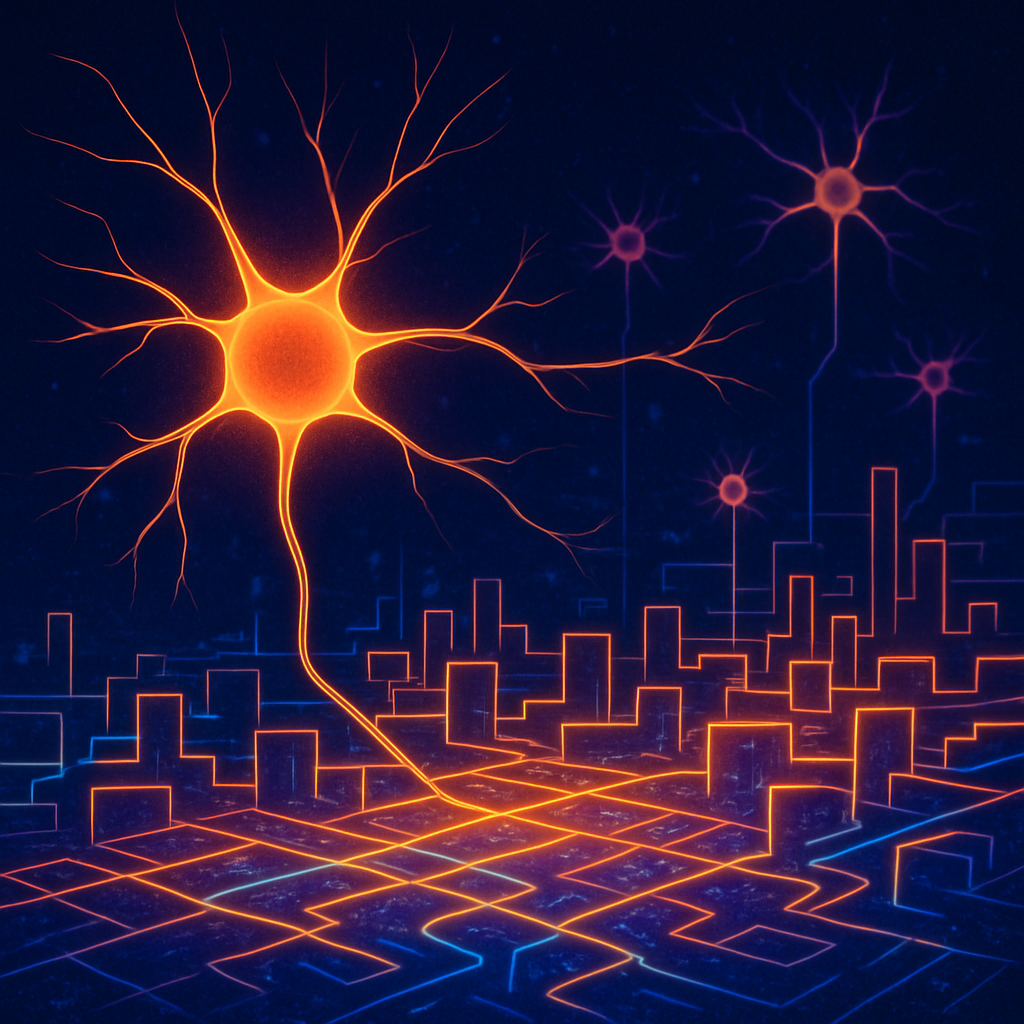The Brain’s New Map
————————
The AI Cartographer and the Hidden City in the Mind
Deep within the skull of a tiny mouse lies a metropolis more complex than any human city. For centuries, we have only seen its outlines, like ancient mapmakers sketching the edges of a fog-shrouded continent. But now, a new kind of cartographer—an artificial mind—is venturing into the streets, and it is redrawing our map of everything.
It began with a whisper of a idea: what if we could create a “Google Maps” for the brain? Not of static land, but of a living, pulsing city of cells. At the University of California, San Francisco and the Allen Institute, scientists built a digital explorer called CellTransformer. Trained on the same technology that powers ChatGPT, they sent it into a mouse brain, and it returned with a revelation: 1,300 distinct districts, some never before seen by human eyes.
This wasn’t the first attempt to chart this inner space. A century ago, the German scientist Korbinian Brodmann, armed with only a microscope and his own intuition, drew the continents of the human cortex, dividing it into 52 regions. It was a monumental feat of human observation. But the brain is not just a shape; it is a story written in layers of data, a living tower built by nature itself. To read it, we must learn its language.

The Blueprint: Genomics
The story of this city begins in the basement, with the immutable blueprint: the genome. Here, in the 3 billion letters of DNA, lies the master plan for every structure, the fundamental rules of construction passed down through eons.
The Daily Newsroom: Transcriptomics
But a blueprint is not a building. To see the city come alive, you must ascend to the next floor: the bustling newsroom of transcriptomics. This is the realm of real-time activity, where genes turn on and off, sending out RNA messengers with urgent memos—”Build this protein!” “Dispatch that signal!” This was the language CellTransformer learned to understand. It didn’t just look at the cells; it listened to their conversations, hearing how neighboring cells influenced each other, defining the character of their shared neighborhood.
The Machinery: Proteomics
The memos from the newsroom are received on the workshop floor: the world of proteomics. Here, the instructions become physical reality. Proteins are the workers, the scaffolds, the machinery that builds the city and keeps it running. When they falter, the city’s infrastructure fails, leading to the slow decay of diseases like Alzheimer’s.
The Wiring: Connectomics
Above the workshops, the city’s wiring emerges. This is connectomics—the intricate network of roads, bridges, and fiber-optic cables that form the brain’s living circuit. Projects like MICrONS have begun tracing every single connection in a cubic millimeter of brain, revealing how the physical wiring gives rise to the flow of thought and memory.
The Energy Grid: Metabolomics
No city can function without power. The energy grid is metabolomics, the constant flow of fuel—glucose, oxygen, neurotransmitters—that lights up the streets and keeps the signals rushing from one district to another. When this grid flickers, the entire city can dim.
Together, these layers—the blueprint, the newsroom, the machinery, the wiring, and the grid—form a symphony. A holome. They are not separate entities but a single, breathtakingly complex performance called a mind.
This is the mosaic CellTransformer revealed. By listening to the transcriptomic layer, it could infer the logic of the entire structure, discovering subtle new neighborhoods interwoven with known landmarks like the hippocampus. These findings are more than just points on a map; they are new targets for healing, for potentially guiding treatments for Parkinson’s or depression with unprecedented precision.
And if a mouse brain, a city we thought we knew, holds 1,300 hidden districts, what does that say about the human brain—a metropolis a thousand times larger? We currently know of about 180 functional regions in our own cortex. We are still sketching the coastlines.
The grand design emerging is not one of rigid borders, but of flowing gradients, where functions blend like colors in a sunset. The brain is not a magic box, but the most sophisticated pattern nature has ever produced—a living universe built from a tower of codes, and we are finally learning how to read them.
